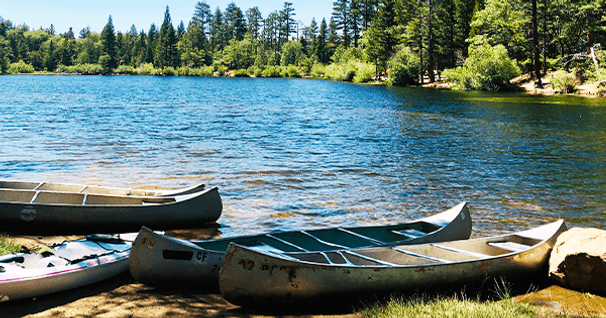Choosing the Right SUP
Paddle boards come in a wide variety of shapes and sizes and it's important to choose the right one, because not only will it let you get the most enjoyment for your time out on the water, but having the right board can also impact your safety on the water. That being said, narrowing down your options is actually pretty easy, and it starts with identifying how and where you'll be using it.
4 Basic SUP Styles
To help answer these questions, the first and biggest decision is which style of SUP is right for you. There are four basic styles on the market:
- Surf-specific boards
- Race boards
- Touring boards
- All around boards
Surf-specific SUPs are typically shorter than other boards, have a narrower nose and tail, and they typically have more rocker, or curve, from nose to tail. These features make the boards great for surfing waves, but the trade off is that they're a lot less stable and they're slower than other types of boards in flat water.
Touring boards are designed to excel in flat or choppy water because they're long and they're pointed at the nose which helps them go straight and glide more efficiently. Touring boards usually have attachment points on the deck for storing gear or attaching accessories.
Race boards can actually look very similar to touring boards, except they're narrower and tend to be a bit longer. This makes race boards extremely fast through the water, but the flip side is that they're much less stable than a typical touring board and so they're best suited for paddlers focused on racing.
All-around boards represent the largest and best selling category of boards. They're generally wider, thicker, and longer than surf specific boards but shorter and not as thick as most touring boards. This allows them to provide a good balance of performance, stability, and versatility. Most of the boards in this category are great for everyday recreational paddling on flat water, which is what most people are looking for.
Some all-around boards are based on a surf style board design which lets them easily cross over from flat water use to surfing. Other all around boards have features that are cleverly designed for activities like yoga, fitness, or fishing.
Board Size & Volume
Once you determine the right style of board for you, next you'll need to determine the right size and volume is a great way to think about board size. There's a certain amount of volume inside any board and of course the longer, wider, and thicker the board is the more volume it has. In general, the more volume a board has and the wider it is, the more stable it will be, but the less maneuverable or responsive it will be. Your challenge is to pick a board with the appropriate amount of volume and width for the people who are going to be using the board.
Most manufactures offer this information in their specifications and they usually also include a maximum weight for novice riders. Make sure you choose a board that will accommodate the largest rider who will be using the board. A smaller rider can always use a bigger board, but a larger rider will struggle with a board that's too small.
SUP Budget
Your final big decision is your budget. Keeping in mind that paddle boards range from a few hundred dollars to well over twenty five hundred dollars. The biggest factor in dictating the price of a paddle board is its construction which impacts a boards weight, performance, durability, and aesthetics.
As a general rule, as you spend more money boards become lighter and higher performance. At the end of the day, you should be looking for a board that fits your budget, will perform well for your intended use, and is ideally both durable and lightweight.
With all of this said, no amount of research can compare to actually taking a board out for a test drive. Check the SUP Board Gear Guide to compare models, read reviews, and evaluate specs. Check with your local outdoor store or surf shop and see if they have any demo boards available. Better yet, see if they have any demo days where you can try and test a variety of boards in the same conditions. As a final note, remember than whatever type of board you choose it's important that you also choose an appropriate paddle, life jacket, and leash.
We hope this helped to simplify the process of choosing the right stand-up paddle board for you!
Related Articles
Remember when you bought your first car? Or maybe it was a bike. You may have chosen it for its color,…
Ever wonder what exactly the weight capacity of a board was for? Turns out it's for the performance of…
Learn the full glossary of canoe terminology in this excerpt from The Complete Book of Canoeing by I.…
Kayaks come in a variety of shapes and sizes and can be made from many different materials. Each design…



